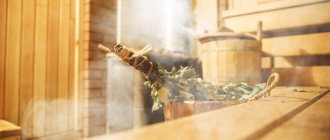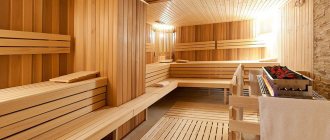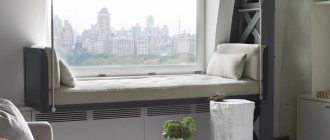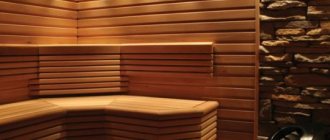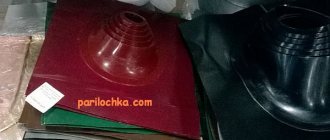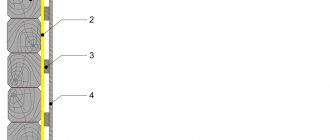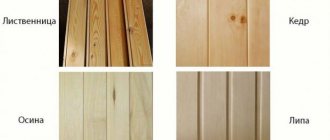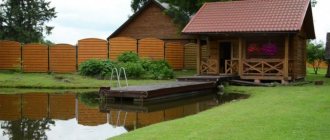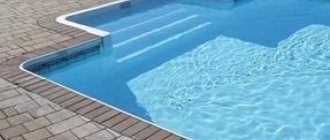A bath towel is an essential attribute of the bathroom, they also always take it with them to the bathhouse or sauna, hence the name – bathhouse. The product can be made using different technologies, be terry, waffle, or made in the form of a sheet. Factories use standard sizes.
There is a whole size grid for towels for various purposes.
Benefits of cotton towels
Reasonable: Cotton is one of the low-cost materials, which can offer high quality to customers in the meantime; due to which, it makes it popular and the most standard type of towels.
Easy to dye: Simply dyeing cotton with natural materials allows the towel to change shades without the need to chemically alter their composition.
Easy to Wash: These towels are extremely easy to clean. All you need is a washing machine!
Dries quickly: Cotton is one of the most common textures when it comes to breathability, allowing cotton towels to dry quickly.
Minuses:
Not very durable: Cotton towels are more prone to damage than their other counterparts.
Colors and Washing: If you're going to machine wash one of your cotton towels, you may want to hold off on washing it with your clothes. Sometimes colors come out of towels and can affect other textile items.
Size measurements: Cotton towels can sometimes shrink after drying - this problem is mostly associated with cotton sheets (very rare with cotton towels).
Towel sizes
| Dimensions | Purpose |
| 30x30, 50x30 | Guest and hand for the bathroom, sometimes used for the kitchen |
| 70x50 | Standard size of a universal kitchen product |
| 85x50, 90x50 | For face and wash |
| 100x50 | For the face, for the legs, sometimes used as a small shower |
| 140x70 | Medium bath towels for shower |
| 160x80 | Standard bath towels for bath |
| 160x90, 150x100 | Large bath linens for baths, baths and saunas, for massage, sometimes used as a small terry sheet |
| 200x80 | Suitable for massage, sauna and steam baths |
| 200x150 and above | Standard terry sheets, great for the beach |
Towel sizes, standard parameters and their purpose
Towel sizes are standard product sizes, i.e. certain length and width of towels, which are used by factories in the production of products and the approved size range of which is constantly produced and replenished in production warehouses. In order to reduce production waste, reduce costs and taking into account the technological characteristics of weaving and sewing equipment, acceptable sizes of manufactured goods are selected. At our cotton factory, the standard and approved sizes include the following main sizes of terry towels:
30x30 - main use as a terry kitchen napkin used in everyday life;
35x70 - small, for household needs, widely used as a hand towel or a towel for children;
50x70 - used for caring and drying feet after a bath or as a terry foot mat;
50x100 - medium, intended mainly for the face and hands, for fitness;
70x140 - bath for the body, a larger area can absorb more moisture after water procedures;
150x100 - beach, the length allows you to wrap your body or lie down, laying it on a chaise longue or couch.
The Palmira company, with preliminary discussion and agreement, supplies home textiles with non-standard parameters for our plant. To clarify and obtain information about the possibility of producing a particular size of towel you need, please contact our managers by phone or email.
Terry towel color
Typically, a terry towel is not only a textile for wiping the body or dishes, but also an integral part of the bathroom design
With the help of this textile, a particular mood is created, so choosing the right color is a very important task. It is colored towels that will add accents to a neutral interior and give the room a certain character.
A delicate feminine interior can be easily created with towels and rugs in pastel shades. Light pink, apricot, milky, blue and turquoise colors will be very useful. If the bathroom is decorated in dark colors, textiles in warm colors will make it less gloomy.
For men, textiles in dark shades, such as dark brown, gray-blue or burgundy, are more appropriate. No less relevant are colorful products with bright patterns.
White towels go with almost any design, while green and yellow items look great in a family bathroom used by both adults and children.
Which towel to choose. Materials
Towels are made from different materials, most often cotton, bamboo and linen. Each of them has its own advantages and disadvantages that need to be taken into account when purchasing.
Towels can be terry (with a large number of moisture-absorbing loops on the surface), waffle and velor (with cut loops):
Terry products are ideal for the face, hands and body - they are very soft and pleasant to the touch, absorb a large amount of moisture.
Waffle towels are a great option for the kitchen. They wipe dishes well, dry quickly and do not lose their basic properties even after intensive washing and boiling conditions. In addition, they do not leave marks on cleaned surfaces.
Velor towels are soft and pleasant to the touch. They, like terry ones, are used to care for hands and face. But such products have worse moisture-absorbing abilities. Velor towels dry faster than terry towels.
Cotton towels
Cotton products are highly hygienic, soft and hypoallergenic. They are recommended to be used for caring for children, especially newborns.
It is important that the towel is made of pure cotton.
The quality of the product and its appearance largely depend on what type of cotton is used. For example, terry cloth made from Egyptian cotton is of the highest quality and elite.
Egyptian cotton fibers are twice as long as standard cotton. Thanks to this, the weave density of the towel is higher, and it has more moisture-absorbing “loops”. The ultra-soft and super-fluffy bath towels found in luxury hotels and spas are typically made from Egyptian cotton. They are particularly strong and durable. However, such products also have disadvantages - they are heavier than standard towels and take longer to dry.
Along with Egyptian cotton is long-staple Pima cotton, which grows in America. It is as strong and durable as Egyptian, but less soft and fluffy. Towels made from this material are produced by the famous American company Supima.
One of the most popular types of cotton is Turkish. It is, of course, not as fluffy as Egyptian or Pima cotton, but it absorbs moisture well and dries quickly. Turkish cotton towels are lightweight and durable, and they become softer and fluffier with every wash.
But the marking that a towel is made of 100% high-quality cotton is not always true. Some manufacturers claim that their product is made from Egyptian cotton, but in fact the towels are made from a mixture of cotton and synthetic fibers. This limits the moisture absorption capacity of the products and makes them less pleasant to the touch.
Therefore, you should choose towels from trusted manufacturers and not pay attention to products made from “high-quality elite cotton” at a low price
Advantages
Suitable for newborns, pregnant women and allergy sufferers;
Ideal for drying hands, face and body.
They have good absorbent properties;
Read further:
Bath towel sizes. standard body bath towel size. how to choose the right size?
At what temperature to wash towels: how to wash towels efficiently
How to choose a towel, according to what parameters and criteria
How to wrap a towel in gift paper? wrapping a towel as a gift for a man and woman
Is it worth ironing terry towels after washing, all the pros and cons
How to boil kitchen towels, effective methods of boiling
Three main reasons why towels stink after washing. how to deal with unpleasant odor? proper drying and storage.
How to bleach white terry towels? ways to whiten at home. how to dry and store them?
How to wash kitchen towels in the microwave? when can this be done? sequence of the procedure. safety.
How to bleach kitchen towels with vegetable oil? whitening methods - compositions, how to do. advice from professionals.
How to roll a towel into a tube: classic methods of folding towels.
Why a towel might be a bad gift
How to fold a towel compactly for storage in the closet or on the go
We wash kitchen towels without boiling using home remedies. proportions, how to do it, subtleties.
How to beautifully fold a towel as a gift: ideas for men and women
Variety of types and their purpose
The towel itself has been known to people since ancient times and, in its homespun version, has accompanied them for hundreds of years. Essentially, it is a simple piece of fabric or paper that absorbs moisture well. In principle, its removal from the surface of the body can occur due to absorption or removal through friction and other mechanical action.
There are kitchen towels, cosmetic towels, massage towels and others. In our context, a bath towel is more interesting. They differ according to many criteria, the main ones of which we will consider.
Bath towel size
Once upon a time, quite a long time ago, we already completed a classic set for going to the bathhouse. For those who don't like bulky bath bags, one universal towel was quite enough. Those who approach the business of visiting the bathhouse more thoroughly completed the set with two products - one for the body, the other for the hair.
A word from Experienced! A classic hair towel rarely exceeds the size of 100x50 cm, the density of the fabric is about 420 - 480 g/sq.m. and the length of the pile is about 5 mm.
The main sizes that bath towels can have are presented in the form of a table:
Attention! It should be remembered that different manufacturers use their own size standards, which may differ from generally accepted ones, as a rule, by no more than 10 cm.
In practice, you can also find the “Italian” standard for a large towel, which is 150x90 cm, and the “German” standard, this one is larger - 180x90cm.
By the way! It is quite obvious that the larger the size of the bath towel, the more space it takes up. For those who take procedures at home or travel by car, this circumstance is not so important, but if you have to travel far and use public transport, then you should think about the size of your bath luggage.
Material for bath towels
It seems quite obvious that for a bath, products made from the most natural raw materials are very preferable. However, such materials do not always provide 100% functionality. So:
- Linen towels, for all their positive qualities: the absence of allergic reactions to fibers, good permeability, moderate heat retention and sufficient hygroscopicity, are somewhat harsh in purely tactile sensations when in contact with the body. This feeling is especially intensified after washing the product. However, pure linen towels are popular in massage and spa salons at bath complexes, where they are successfully used for light and delicate peeling of steamed skin. They are also revered by lovers of “hard baths”: with high temperatures in the steam room, ice douches, and spruce brooms. Against this background, the bath towel should be appropriate;
- Waffle towels have a harsh and dry surface structure, especially when the product is new or dry after washing. They absorb moisture satisfactorily, look modest, and are compact. They are moderately popular in bathhouses, nothing more;
- Velor are very elegant products, with a beautiful play of light under various types of artificial and natural lighting. They look expensive both externally and on the counter. They retain heat well, but almost exclusively due to low permeability. Inferior to competitors in terms of moisture absorption quality. Item from the theme: “Burst, but keep it in style.” Not as popular in bath use as manufacturers would like;
- Jacquard towels belong to the class of products in which appearance prevails over consumer qualities, primarily due to the relief texture. It also plays some negative role in reducing the hygroscopic properties of such a product. In practice, it is jacquard that acts as the main material for such bath items as a sauna towel;
- Terry towels, like the terry robe, are one of the timeless classics of the bath genre. The price-quality ratio of such products is close to ideal, and a large selection of colors and patterns allows you to satisfy the tastes and preferences of the most demanding users;
- Bamboo - stand at the top of the hierarchy of these bath items. They have an increased ability to absorb moisture, sometimes especially high-quality specimens; their hygroscopicity is 350% higher than an ordinary linen product. They have a very soft and delicate texture, which has a very positive effect when used by people with sensitive skin.
Color spectrum
As in the case of dressing gowns, the most durable and practical are products in soft pastel colors that do not have sharp transitions in the color palette. The most resistant to loss of saturation are red, orange and yellow. Violet and blue colors lose depth and quality faster.
Manufacturing materials
Terry towels are in high demand today due to the softness and high level of comfort they provide during use. These towels can be made from various fabrics, so it is worth familiarizing yourself with the materials used to make them.
Cotton. Cotton towels are quite soft, delicate, and are also excellent at absorbing moisture. It is worth giving preference to fabric made from organic cotton, since it is grown without the addition of chemical compounds. This fabric is environmentally friendly. Such textiles are brought from various countries such as Turkmenistan, Pakistan, Brazil, Uzbekistan, Turkey and Egypt. But there are products that contain both organic and synthetic fiber. On the product label you can find information about the composition of the fabric. Thus, artificial fibers are designated as “M”, and polyester – “P”. Cotton towels are offered by companies such as Tac, Hobby, Arya, Karven and others.
Other types
In addition to the types listed, there are many different types of towels.
Particular attention should be paid to products for children:
Children's towels. The material for such specimens is special: soft, delicate, with double-sided terry. Children will be interested in towels with bright patterns. They are often made with a hood so that the baby does not throw the towel off his head. A beach towel usually combines two functions at once. They enjoy drying themselves off after swimming in the sea, and also lie comfortably while sunbathing in the sun. The main requirement is good absorbency, as well as a convenient size. Towel or wedding towel. Carries more semantic function
A gift for an important event. It is usually made of linen, decorated with embroidery, floral patterns, and images of doves, larks, and swans. Massage towels are specially made with a specific combination of cotton and linen
They are more rigid and allow you to relax and calm the muscles.
Before choosing a towel, you need to decide in advance on the size of the product. Like all textile products, towels have their own size standards. Imported ones may differ slightly, but basically the indicators are the same, mainly as follows:
- Guest or toilet towels. Size 30x30 (30x50). Used on hands or in the kitchen.
- Kitchen standard 50x70.
- For face towel 50x85(90).
- A 50x100 towel is usually used for the face or as a small shower.
- Medium bath (can be used for a shower) 70x140.
- Classic bath 80x160.
- Large sizes 100x150 or 90x160 are often used in baths and saunas. You can wrap yourself thoroughly in this towel. Can be used as a small terry sheet on the beach or in a massage room.
- Size 80x200 is also used in a bathhouse or massage room.
- Sizes from 150x200 to 175x250 can already be classified as terry sheets.
Standard sizes of bath towels and their purpose
In textile factories, they use standard dimensional grids approved many years ago, which help reduce waste, take into account the features of production machines, and also reduce production costs. In addition, standard sizes meet all customer requirements and are used not only at home, but also purchased for trips to the beach or to the bathhouse.
The size range is quite varied:
- 30X30 (another name is a kitchen napkin, used for household needs);
- 35X70 (intended exclusively for home use, more often used as a baby wipe);
- 50X70 (canvas for feet or as a terry mat after getting out of the shower);
- 50X100 (average size of a bath product, used for the face or hands, and also used in fitness rooms);
- 70X140 (a large product that can absorb moisture after procedures in water, used in bathrooms, saunas, baths or swimming pools);
- 150X100 (beach sheet, used not only to absorb moisture from the body, but also an excellent solution for laying on a couch or just on the sand).
Stores that sell name-brand products always stock standard sizes of towels that customers may require.
In the approved GOSTs , some deviation from the dimensions according to the standard is allowed. That is why products, depending on the manufacturing factory, may vary slightly in length or width.
Some factories provide the service of sewing towels according to individual customer sizes.
This is very convenient for people who are looking for non-standard options for decorating rooms in their home and prefer original things.
What parameters should you use to choose a face towel?
A face towel is selected according to the following characteristics:
- Material.
- Product size.
- Correct hardness and density.
- Optimal pile length.
- Decorative characteristics.
Selecting a towel by material
Material is the main criterion for choosing a towel. When buying a face towel, you need the textile to have the following qualities:
Silk fabric
A silk towel is the best choice for your face. Silk quickly absorbs moisture and dries. This natural fabric has natural bactericidal properties and kills almost all bacteria that come into contact with it. The material is smooth, delicate, pleasant, and will provide gentle skin care. The high strength of the fabric will allow you to use this product for more than 10 years.
Cotton fabric
Cotton towels are the most common. The fabric is practical, quickly absorbs water, and also dries quickly. Pleasant to the touch, pleasant to the face. The material is durable, does not lose its appearance over time, does not tear, and can withstand a large number of washes. Cotton fabric does not cause allergic reactions, prevents the growth of bacteria, and is environmentally friendly.
Velor fabric
Velor is made from cotton fibers using a special technology. The fabric gets a glossy surface and softness. It has good air permeability and quickly absorbs moisture.
Jacquard
A special double weave of cotton threads makes the material dense but pleasant to the body. It has high water absorption and dries quickly. Wear resistance is at a high level, the fabric will last more than 10 years.
Terry fabric
The presence of pile makes the fabric pleasant and soft
Despite the popularity of terry towels, choose them carefully for your face. Terry is made from cotton, make sure that on the label after the inscription “100% cotton” there is a designation (M) - natural fibers
The designation (PC) on the label indicates the presence of polyester fibers, which make the material more rigid.
Bamboo fabric has recently appeared on the market and has proven itself well. A towel made of bamboo fibers absorbs moisture more than 3 times faster than cotton. The material is durable and resistant to mechanical damage. Kills about 75% of bacteria per day, preventing them from multiplying. It has a slightly glossy finish that is pleasant to the body.
Selecting a towel by size
Face towels are made in small square or rectangular shapes. The standard sizes of facial bath products are:
- For rectangular ones - 50x90, 50x85.
- For square ones - 50x50, 60x60, 70x70.
Large face towels are not used because they are not convenient. The size of the product should be 10 centimeters larger than the volume of the face.
Choosing a face towel based on hardness and density
The density of the towel affects durability and moisture absorption. This parameter is measured in grams per meter. The product for the face should have an average density of 300 to 500 g/m2. A higher density will make the towel hard and unpleasant for the skin of the face.
The firmness should be low, especially if you are buying a towel for children who have highly sensitive skin. Hardness is determined by touch.
Choosing a towel according to the length of the pile
The length of the towel pile should be small - 3.5 mm. This will be enough for the face. The pile is too long - 5-8 mm, it will not be able to remove all moisture from the curves of the face, and after washing and during use it will have an unaesthetic appearance.
Pay attention to the quality of the pile. Avoid purchasing if the lint is easily pulled out and pulled out with your fingers.
Choosing a towel by design
Avoid buying face towels with embroidery, ribbons or jacquard inserts - they pose a risk of facial damage. Choose a plain or multi-colored product, without additional elements for decoration. For your child, you can choose a towel with multi-colored prints in the form of cartoon characters.
It is better to purchase towels in white or light colors. When purchasing colored products, study the composition of the fabric; they should not fade, otherwise you risk that the dye will reflect on your face. If you are confident in the manufacturer, feel free to choose colored textiles to match your bathroom design.
Quality
After a shower, the skin becomes softer due to water and gains sensitivity. Therefore, towels made of synthetic materials are not suitable. Cosmetologists recommend using natural materials, ideally cotton compounds.
The “silk boom” did not bypass towels either; silk was popular, but performed its main function poorly. The products quickly became wet and sticky. And to wipe the body dry, several towels were required.
Cotton has a number of advantages. The fabric is easy to care for; terry towels can be washed by hand or by machine. The material is zero allergenic, which is why it is so often recommended by doctors. Performs the main function of absorbing moisture perfectly.
High-quality textiles should cope well with water. Tall, fluffy pile is the main indicator. Cheap models do not have this advantage.
You should examine the loops; a good towel will have them carefully twisted. If this feature is excluded, then after a shower, lint will regularly remain on the body. For people with skin problems, this will cause a lot of inconvenience.
Cotton textiles have one drawback. The soft and fluffy pile wears out quickly. Some of the fibers are lost, and the material absorbs moisture less well, delivering a less pleasant feeling. You shouldn’t skimp and it’s better to buy a set of terry towels, because health is not something you should skimp on.
Ten tips for choosing a towel
1
To choose a high-quality and comfortable towel, pay attention to the type and structure of the fabric, the density of the fabric and the height of the pile, the degree of softness and moisture absorption;. 2
Before buying, touch the material, remember and even smell it. There should be no waxy or greasy residue on your hands. There should be no creases or dents left on the material, and the smell should not be pungent, chemical or contain foreign impurities;
2. Before buying, touch the material, remember and even smell it. There should be no waxy or greasy residue on your hands. There should be no creases or dents left on the material, and the smell should not be pungent, chemical or contain foreign impurities;
3. The product must be uniformly and reliably painted, without streaks or color changes. Rub a white, damp cloth over the colored towel. If the latter is painted, the painting was done poorly, and the product will fade after five to ten washes. What to do if things are faded, read the article “How to wash a faded item at home”;
4. Check the finishing of the edges of the product. They should be with evenly cut threads of the same type. Make sure that the threads are not pulled out of the fabric. Choose a towel with seamed edges; the stitches should be frequent and the stitching should be even and strong;
5. A quality and durable towel will not be lightweight. So, products 70x140 weigh about 0.5 kg. The density of a reliable terry bath towel is 400-600 g/m2. For thin products, 150-300 g/m2 is enough;
6. For the kitchen and for washing hands, choose waffle cotton towels. They are durable and practical, yet pleasant to the touch;
7. For baths and saunas, baths and showers, choose terry towels. Use large terry cloths for beach holidays and massage procedures, as well as as a sheet or bedspread;
8. When purchasing terry products, choose textiles made from 100% cotton. If the fabric contains more than 5% synthetics, the fabric will become stiff and uncomfortable after three or four washes;
9. Linen towels are more expensive than cotton ones. They have a presentable appearance, so they are perfect for decorating a festive table;
10. Synthetic towels are suitable for washing dishes, cleaning the kitchen or bathroom. This material quickly removes dust and dirt without leaving streaks.
Towel sizes: standard parameters and purpose
A towel is not only a beautiful accessory that can decorate any interior, but also an extremely useful and necessary thing. It creates a certain coziness in the bathroom, maintains the overall style and allows you to feel real warmth and tenderness after taking a bath or shower. For many, choosing a high-quality and comfortable towel is a real problem, since the products offered on the modern textile market are not always of good quality and comfortable parameters. To choose a beautiful, and most importantly, comfortable set of towels for the body, face and hands, you need to carefully study the issue.
There are many options for the composition of towels, and the quality of the purchased product will depend on it. Experts consider natural cotton to be the best material for towels, because it is superior to its competitors in many respects. They are the most expensive, but at the same time really high quality.
- Pay attention to terry cotton products produced in Egypt or Pakistan. These countries have a temperate climate all year round and grow long-staple cotton, which makes luxurious towels. They are suitable for daily use and frequent washing because they contain long and strong threads. Such options are striking in their special softness and long service life, which fully justifies the rather high cost compared to Chinese and Turkish counterparts.
- Silk threads are often added to the composition, but such products in most cases are not of good quality. In addition, a silky towel does not absorb moisture well, so it is not suitable for bath options and can only be used for hands or face.
- Bamboo towels have become very popular lately. Manufacturers claim that they are hypoallergenic, easily absorb moisture, are soft and have a long service life. In addition, fungus does not grow in such products. When compared with the same linen towels, this is a serious advantage. In fact, bamboo fiber is an artificially manufactured material, but the production process is such that it contains a minimum of “chemicals”, and the structure of the fabric is quite porous, which allows it to cope well with moisture.
How to choose an absorbent towel? What density of towels is best?
Did you know that absorbency is one of the most important factors to consider when purchasing bath towels for your home, beauty salon, bathhouse, fitness club, wellness, spa?
2. Material - towels are made from different types of fabrics, including bamboo, microfiber, cotton and others. Of all fabrics, cotton is the most absorbent material. So this means that a cotton towel will absorb more moisture than microfiber, bamboo or any other towel.
Do you know, why? Cotton fibers have a lot of space between them. The spaces allow more water to flow in when the luxurious cotton bath towel comes into contact with the water. This is due to cotton's structure, capillary action and hydrophilic properties.
3. Thickness and density - these two factors vary depending on the fabric
While they also play a role in determining how absorbent a towel is, it is important for you to know that density and thickness are two different variables. The thickness of the towel is determined by how much space the fabric takes up
But on the other hand, the density of a bath towel is determined by how tightly the fibers are packed together. This means that a luxury cotton bath towel with tightly packed fibers (high density) and high thickness will absorb moisture than luxury soft towels with a lower density and thickness. The higher the number, the more material was used for each square of fabric. Typically, a density of more than 500 g/m² is a good indicator of the quality of the towel. 4. Absorption
Thicker, heavier towels tend to be more absorbent than thinner, lighter towels, but of course they also take longer to dry. Egyptian or Pima cotton towels, a premium brand of cotton, are super absorbent, and viscose towels even absorb a little more water than cotton.
Dimensions of bath mats or foot towels
A foot mat or towel for your bathroom is a towel-like mat that sits on the floor next to your bathtub. Although you don't actually dry your body with this towel, you just stand on it; it serves an absorbent purpose to keep the floor dry when you get out of the shower. The material on bath or shower mats looks similar to a standard towel, but is slightly thicker; to help absorb all the moisture on wet feet.
Although most bath mats are roughly the same size, you may notice some differences. Typical Bath Mat Size Range
is
50x80 cm and 50x70 cm
in width and length. Stick to smaller sizes if you have a tiny bathroom or want to save space. Choose a larger rug if you need a larger surface area to cover your floor.
What to look for when purchasing?
But you need to know a few more little secrets that will greatly help when choosing a quality terry towel:
Pile length is one of the main factors when choosing a good bath accessory. Ideally, the pile should be 5 mm. This is the best option. Too long will take a long time to dry, will quickly roll up and lose its appearance. A short one will be tough and poorly absorb moisture.
Such a sample will very quickly become unusable.
When purchasing, pay attention to whether the option you choose is crumbling. If small fibers remain when compressed, this indicates that low-quality fiber was used in production.
This item won't last long.
You should always look at the label. A natural product should be marked 100% cotton. Sometimes manufacturers decide to cheat and designate them with other symbols to hide the addition of synthetics. But we will help you figure this out: cotton 100% is a composition made of pure cotton without any additions; 100% cotton M - there is an artificial thread here; 100% PC cotton - polycotton added.
The density of a towel directly affects its quality and ease of use. The higher the density, the better. But this parameter is generally not indicated on the labels. To determine “by eye” which one to take, you need to weigh it. To do this, take 2 identical towels, between which you are choosing, and compare them in your hands. Whichever is heavier is correspondingly denser. According to the standard, the density should be approximately 500 g/sq.m.
But, at the same time, the product should not be very thick. Otherwise it will take a long time to dry. Which is not very convenient for daily use.
The softness of the towel may indicate both the quality of the terry and the presence of synthetic additives. This is very easy to check at home. To experiment, you need to pour a little water onto a glass surface. Then take our towel and wipe the stain. If it absorbs all the water perfectly, the composition is natural. If it does not absorb completely and leaves streaks, then the product is made with the addition of synthetic materials. Thus, we immediately checked for hygroscopicity, which is very important for comfortable use.
You can also look through the fabric of the product at a light bulb or the sun. If it does not shine through, then the product is good. If it glows, then such an accessory will not last long. And after a few washes it may even tear.
You can also check the seams. A quality towel should be double stitched with frequent stitches. Then it will withstand washing and serve for a long time. If only an overlocker was used, then you should not expect a beautiful appearance from such an item even after the first wash.
Good quality textiles should not fade. When purchasing, just walk over it with a damp cloth and make sure the quality of the coloring. If there are traces on the napkin, then it was painted with low-quality dyes. This may be dangerous to your health.
Terry towels are already a classic. They are perfect for both the whole body and the face - durable, soft, gentle. Ideal for delicate skin.
Manufacturers can add bamboo, linen, silk and eucalyptus to the composition. This softens the fabric and makes it more pleasant.
Care Tips:
- Terry towels should be washed at a temperature no higher than 60 degrees and with the machine not fully loaded.
- Use bedding powder.
- Do not use fabric softener. And in order for terry products to remain soft and pleasant to the body, you need to keep them in salt water after washing. The solution is calculated as follows: 2 tablespoons of salt per 1 liter of water.
- Ironing terry towels is not at all necessary. It's enough to just hang it evenly.
- You should always follow the instructions on product labels. This will help avoid unpleasant surprises when caring for your textile products and will significantly extend their service life.
If you need help choosing a terry towel, please contact us. Our managers will be happy to help you choose the accessory that is ideal for you.
A towel is not only a must-have item for personal use, but also a great gift that is perfect for both men and women. In our store you can choose a towel for every taste and color.
Happy shopping!
Towel sizes
| Dimensions | Purpose |
| 30x30, 50x30 | Guest and hand for the bathroom, sometimes used for the kitchen |
| 70x50 | Standard size of a universal kitchen product |
| 85x50, 90x50 | For face and wash |
| 100x50 | For the face, for the legs, sometimes used as a small shower |
| 140x70 | Medium bath towels for shower |
| 160x80 | Standard bath towels for bath |
| 160x90, 150x100 | Large bath linens for baths, baths and saunas, for massage, sometimes used as a small terry sheet |
| 200x80 | Suitable for massage, sauna and steam baths |
| 200x150 and above | Standard terry sheets, great for the beach |
Bath towels: down with consumer goods
Last time we discussed bathrobes in detail. In the end, a pressing and largely rhetorical question arose: what is more practical - a robe or a good old sheet? Without going to extremes, you can find an excellent intermediate, and in many ways, more universal option - bath towels. Actually, our story today is about them.
Kitchen towels
Kitchen waffle towels are also made from cotton. Cotton waffle products absorb liquid well and dry quickly. White cotton, like linen, is easily washed in any washing mode and with any detergent.
What is especially important for kitchen towels is that waffle fabric can be boiled and bleached without damaging the structure of the material. Colored models require more careful care
By the way, Egypt and Pakistan are considered the best cotton producers.
Another solution for the kitchen is microfiber towels. They absorb moisture well and quickly, collecting dirt and harmful bacteria. A synthetic product does not last long, but is cheap. It is suitable for wiping dishes and dust from various surfaces. However, it is better not to use microfiber on your hands, face or wash.

